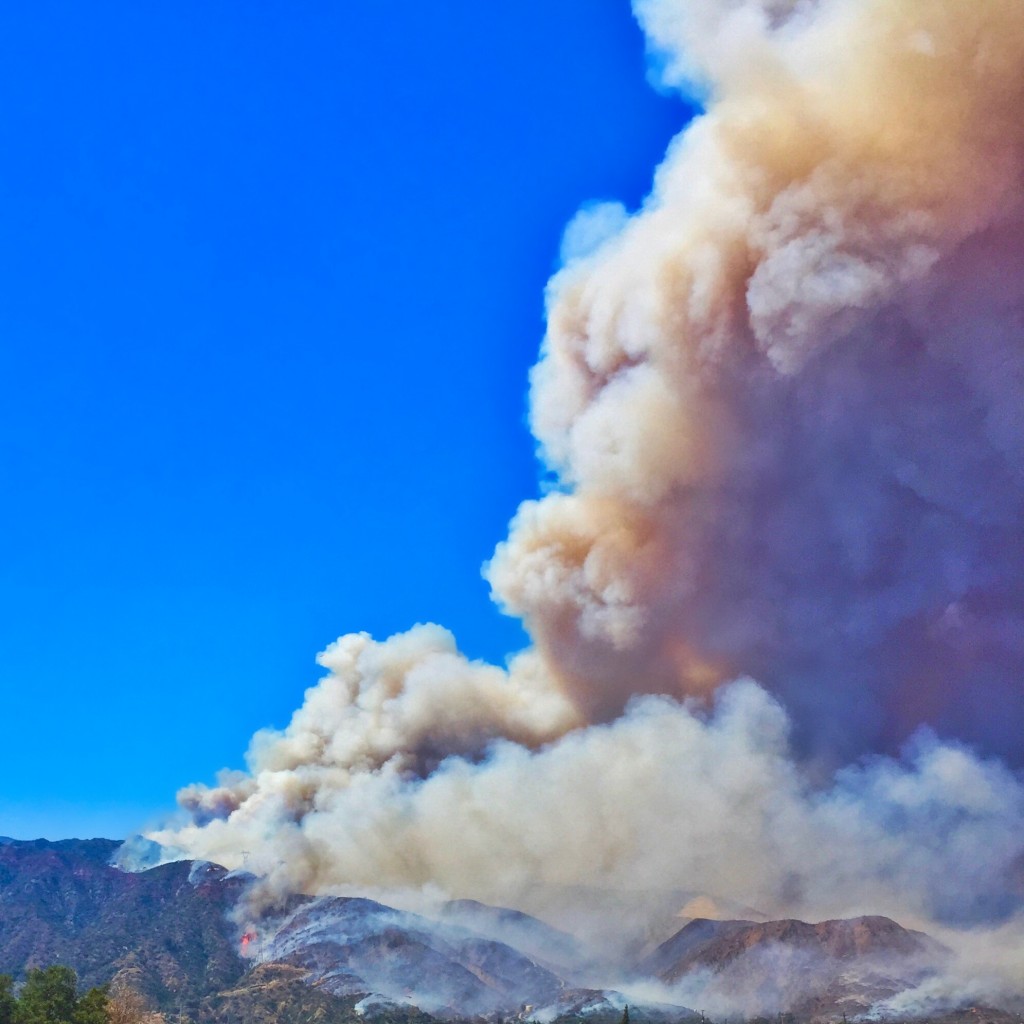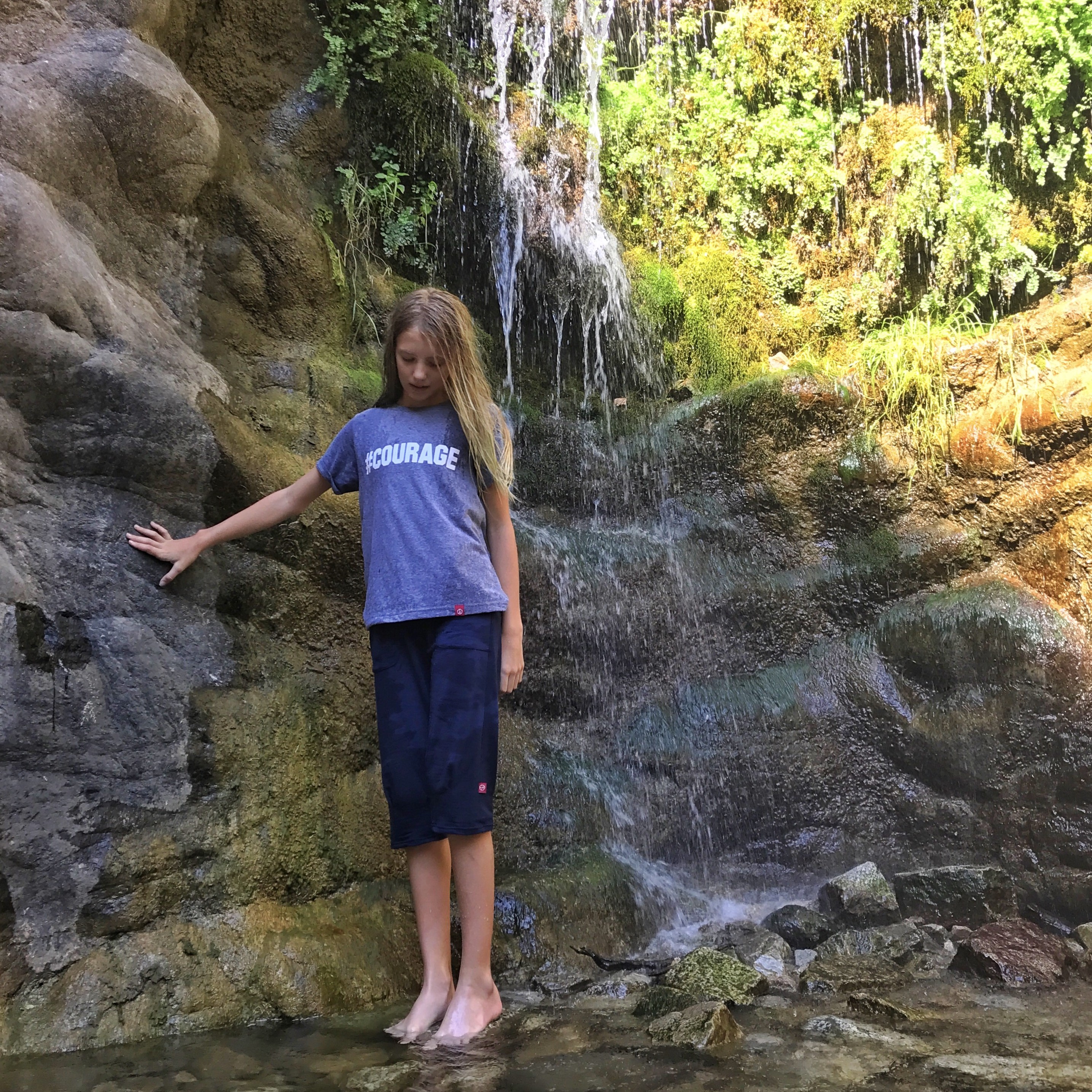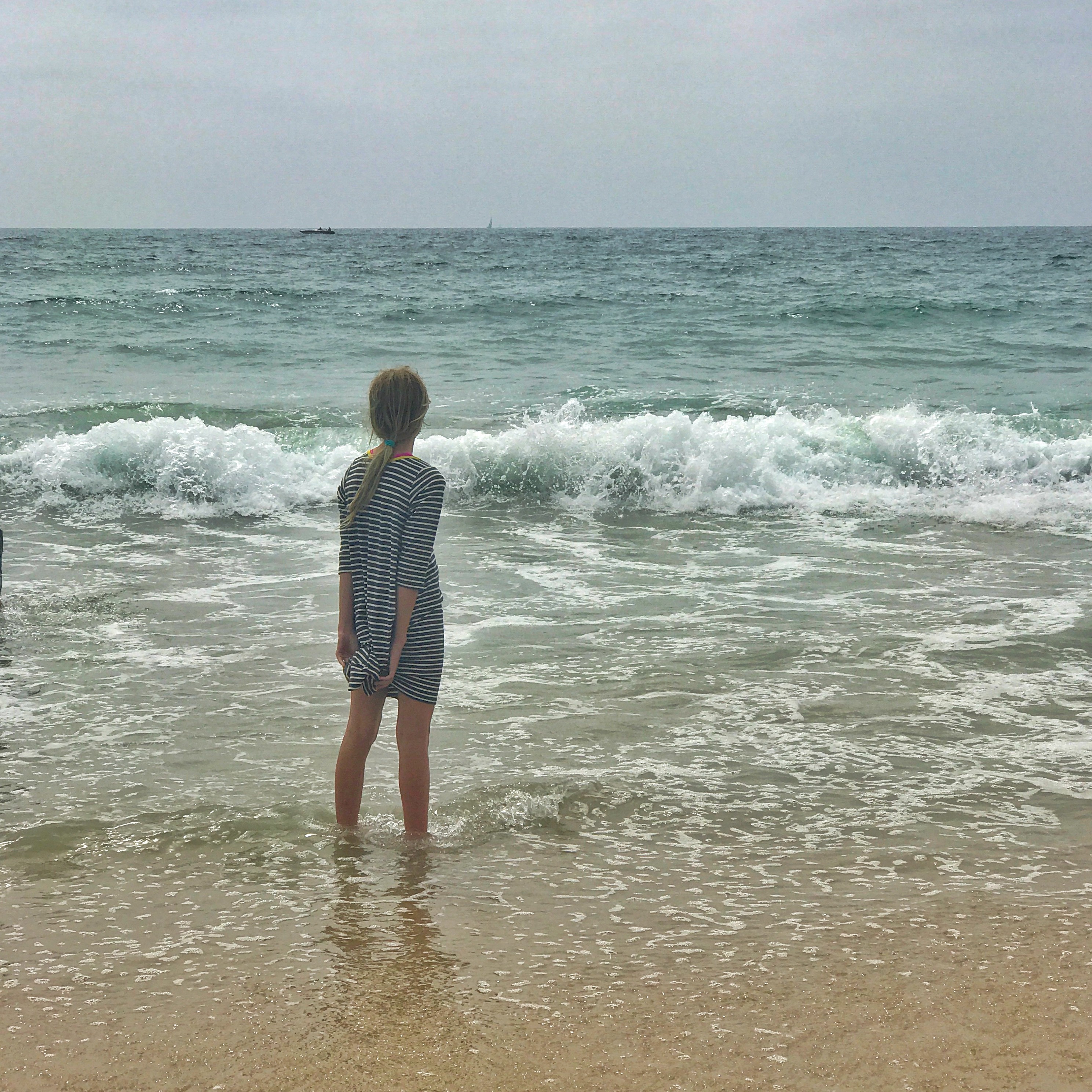This past weekend, my mom was evacuated from her home in British Columbia due to wildfires. She’s still evacuated; she knows that her home is still standing, but the fires are still burning and the roads are still closed and they’re not letting anyone back into her village because fire is unpredictable, and things could still go badly.
This, of course, has unnerved my children. They’re not strangers to wildfires – we live in southern California, where forest fires, unfortunately, flare up with some regularity (the image at the top of this post is the sky above our house during a fire in the Angeles Mountains last fall). But this is the first time something like this has had an impact on someone they love. Grandma was in danger, and Grandma was scared, and that made this particular fire different.
“It’s actually more than one fire,” I told them. “It’s a lot of fires. There are a lot of people affected by this, not just Grandma.”
“But WHY?” (When Emilia is trying to wrap her head around something, she simply asks why. Even if it’s a what is this or how did this happen or where did this come from or where does this take us set of questions on the table, her preferred interrogative is WHY. Probably because for her, every question reduces to an existential problem. “Why” is, end of the day, the only question that matters to her. Which, fair enough.)
“Fires spark really easily in dry areas, especially in the summer, and they can spread really quickly. And it’s been really dry and hot in BC – like here – and any little spark from lightning or trains or campfires can get one going. And once they’re going, they’re hard to stop.” I didn’t specifically reference climate change as a factor, but it was there, an unspoken thread in the conversation. We live in the desert: my kids know about heat and drought; they know that when temperatures get hotter, things get drier. And they know that the world is getting hotter.

Forest fire near San Bernardino last year. Photo taken while driving home from Joshua Tree; even speeding by it felt too close for comfort.
Which is where the conversation got difficult for me, on two counts. One, I didn’t want to go down the frightening rabbit hole of discussing all the ways that the environment is changing, and two, I didn’t want to go down the also-frightening rabbit hole of discussing all the ways that nature can be dangerous, climate change and environmental issues aside. Because those are difficult conversations to have, and because I don’t want my children to live in fear – fear of nature right now, or fear of what happens to nature in the future. (The first fear is particularly pressing right now: we’re scheduled to go camping with some other families this coming weekend, and the last thing I need is for either of my kids to decide that they’re terrified of forests.)
So I reduced it, as I usually do, to the things that are within our control. What can we do, as individuals and as a family, to keep nature healthy and safe, and to stay healthy and safe in nature?
- We can take actions in our own lives. It might not seem like much, but reducing waste, managing how much energy we consume, minimizing our carbon footprint – these all do contribute to making a difference on a bigger scale. They won’t prevent the next wildfire, but they’re a contribution to a larger pattern of action that might – might – reduce their incidence in the future. But most importantly, they are ways for us to take responsibility, as a family, for the health and wellbeing – the happiness – of our environment and our planet. I want my kids to take that responsibility seriously.
- We can treat nature with the respect it demands. That means recognizing that nature has – as Jasper puts it – extraordinary powers (“THE ELEMENTS ARE SUPERPOWERS, MOMMY”) that we should remain in awe of – and around which we should carry ourselves with care. That means, being mindful of risks and comporting ourselves accordingly: if there’s a campfire ban, obey it (do more than that – use our judgment about whether we need one, regardless of whether there’s an explicit ban. Smokey the Bear was totally right when he said that we can prevent forest fires.)
- We can choose to not let fear undermine our relationship with nature. Nature has its dangers, but nature is also our home – no less than it’s home to bears and birds and trees and bugs and flowers and sharks and squid and earthworms and everything else. We need to do our part to take care of it, not just because it’s the good or right thing to do, but because our happiness depends on it. Imagine being afraid of your own house? The more you respect and love the space that you’re in, the happier you are: this is no less true for the natural environment that surrounds you than it is for your living room. Sure, that chandelier could fall, or your bath could become a glass-explosion hazard (that actually happened), but the more care that you give your home, the less likely are the dangers within it – and greater is your happiness. This is as true of the larger world as it is of your private spaces within that world.
None of this made the kids (or me) less worried about their Grandma, of course. And it’s in no way sufficient to solving the bigger environmental issues that lay ahead. But it’s a start. Pursuing not just our own happiness, but the happiness of the natural world around us, is how we really get to WHOLE happiness.
I truly believe that.
This post is part of The Whole Family Happiness Project, in partnership with Social Currents and the Low Carbon Economy Narrative Initiative. The Whole Family Happiness Project poses the question, “What is the connection between our individual purpose, our family happiness, and the happiness of the world around us?”
To learn more or get involved, visit Whole Family Happiness on Facebook. #wholefamilyhappiness





